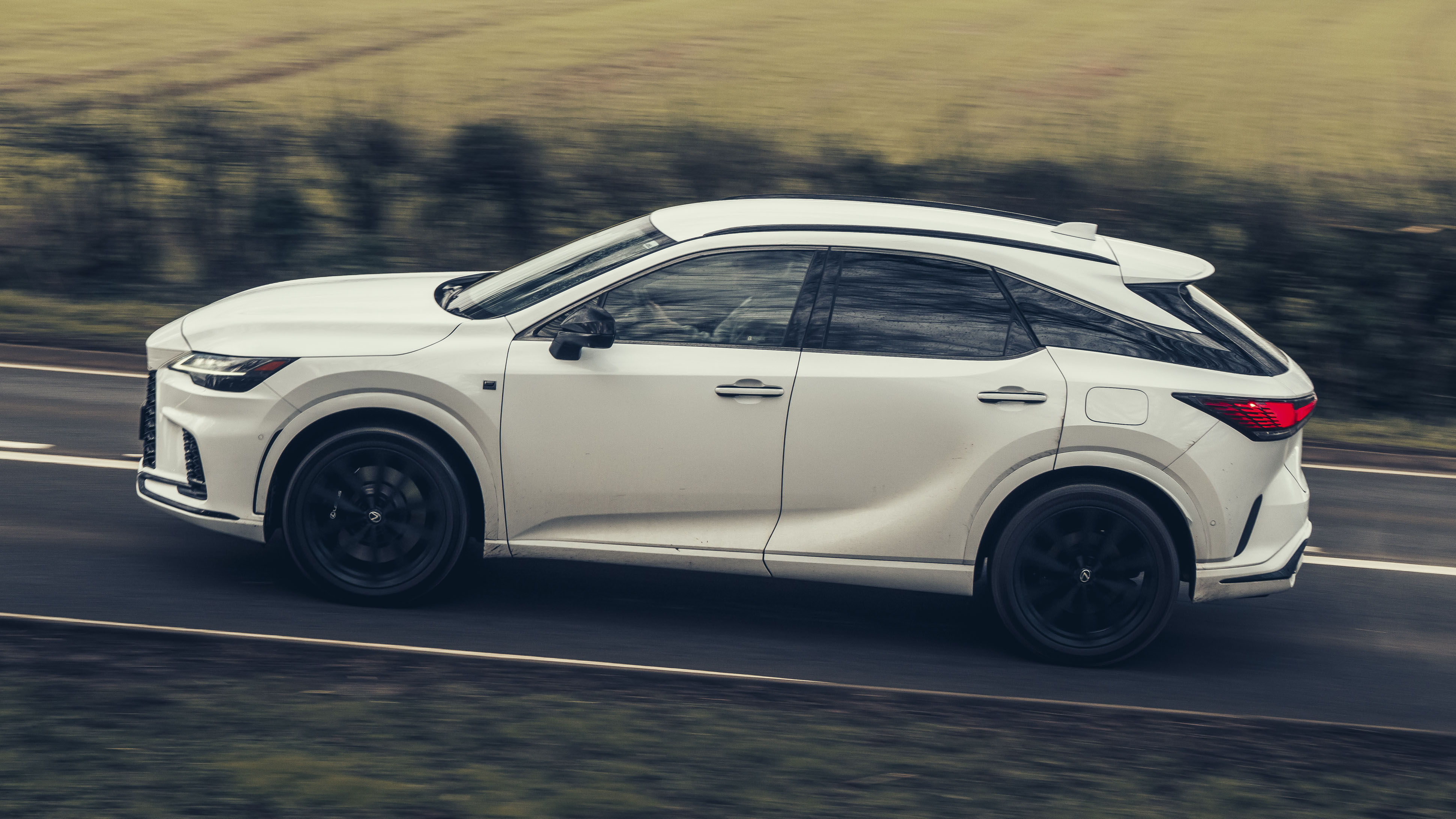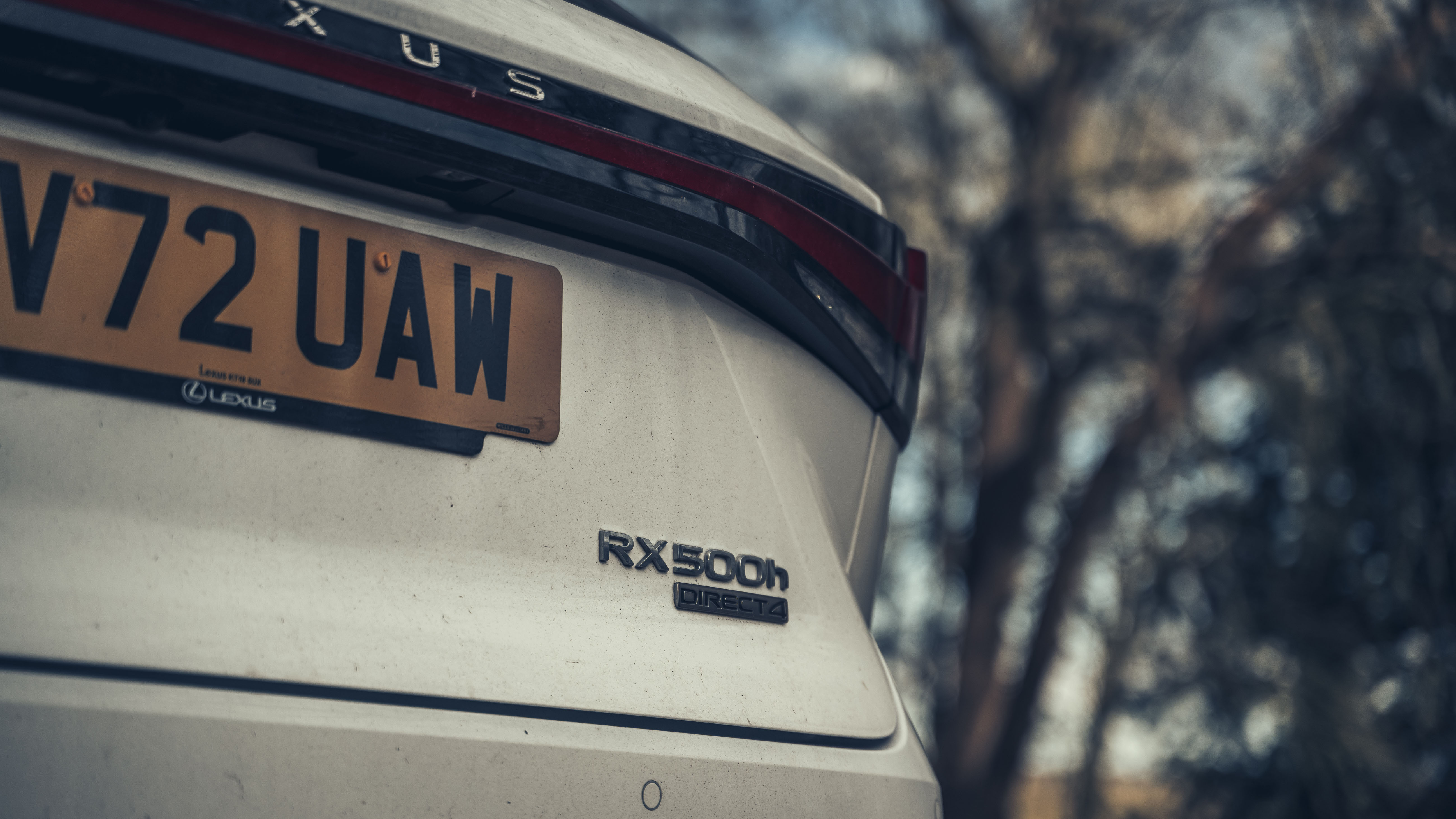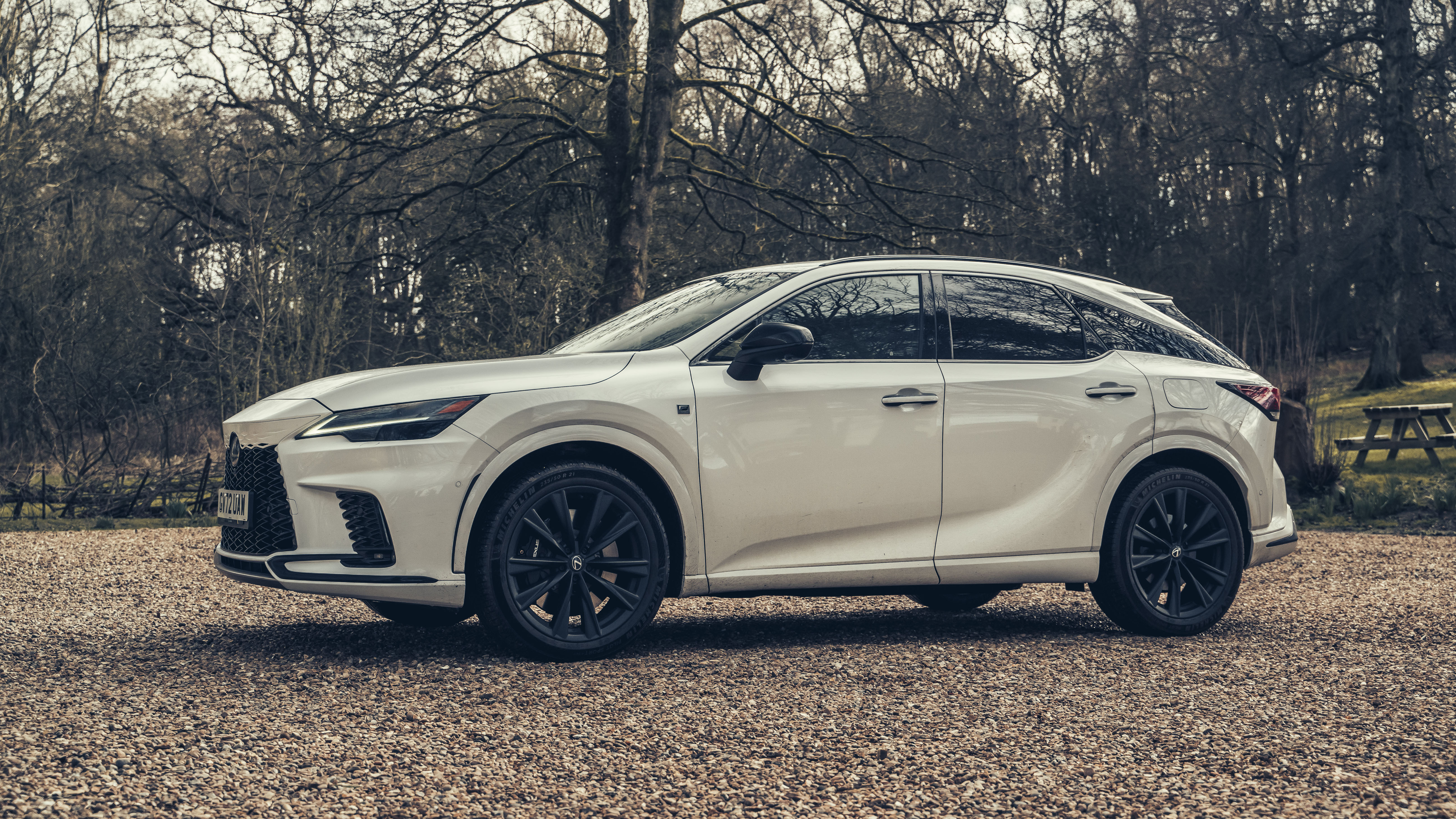
SPEC HIGHLIGHTS
- SPEC
Lexus RX 450h Takumi
- ENGINE
2487cc
- BHP
304.4bhp
- 0-62
6.5s
Like a Pokemon, our Lexus 450h PHEV has evolved into a 500h
The sharper-eyed amongst you will notice that TG’s green Lexus RX is now white. The 450h PHEV has mysteriously become a 500h, a car with a similarly intriguing mechanical configuration and a mission to (re-)introduce some sporting smarts into the Lexus line-up.
The truth is that GY23 EOC was required to return to Lexus HQ, but we figured three months in the plug-in hybrid followed by three in the more powerful 500h would be an interesting comparo. Not least because it ousts the CVT that’s been a staple of Toyota and Lexus hybrids for years, in favour of a more conventional six-speed automatic gearbox. On top of that, Lexus has added a new torque-vectoring electric rear axle.
Before getting deeper into that, some thoughts on the PHEV. Unlike many of its ilk, it really works. Even in the depths of a dispiriting winter, the electric apparatus was returning 40 miles, no problem. Charging it at home took no time, and there were plenty of days when the combustion engine went largely untroubled. On longer journeys, the 450h would deliver 45mpg, a fantastic figure for a full-size SUV.
This efficiency was matched perfectly to the RX’s generally serene personality. Rushing only highlighted its only weaknesses: the charmless CVT and its mass. I also loved its Takumi-spec interior, which reworked the age-old luxury car trope of wood and leather to authentically Japanese effect. Bentley, BMW and Mercedes all deliver interiors that marry hi-tech with high-end materials, but a posh Lexus has an atmosphere like no other.
Our 500h is an F Sport, so while still peerlessly put together, it trades some of that for a more aggressive attitude, inside and out. Two things hit me when I first climbed into it: the red leather interior and the fuel economy read-out. From 40-plus mpg, we’d tumbled down to 31mpg. Still better than the high teens I struggled to achieve in a Range Rover Sport SV a few years ago, but even so.
Is it worth that in terms of extra dynamism? That’s the test, I guess. The RX sits on Toyota’s alphabetti-spaghetti TNGA-K platform, which does duty in lesser vehicles such as the RAV4 and Highlander. But it’s longer and stronger here, with more interior space than the previous model, a lower roof, reduced centre of gravity and hip point. Lexus’s owners are older on average and appreciate a less arduous ascent into the cabin.
The 500h also challenges the big-engine-equals-prestige orthodoxy. I guess we’re all well along that path now, even if I still pine for the 6.2-litre V8 that powered the Mercedes AMG CLS 63 I owned for one glorious year in the late Noughties.
Here we’re talking a transverse-mounted 2.4-litre turbocharged four-cylinder that makes 268bhp. It’s aided and abetted by an 86bhp electric motor, with a second e-motor mounted on the rear wheels. That one’s good for 102bhp, with a nickel metal hydride battery under the rear seats supplying the juice. Lexus says the peak system output is 366bhp and 406lb ft, which isn’t enough to worry Porsche or Rangie drivers but should be enough to get the job done.
Which, this being a Lexus, is to keep things moving briskly and elegantly. Excess isn’t part of the picture, which is a USP in itself.
Featured

Trending this week
- Car Review
BMW 1 Series






